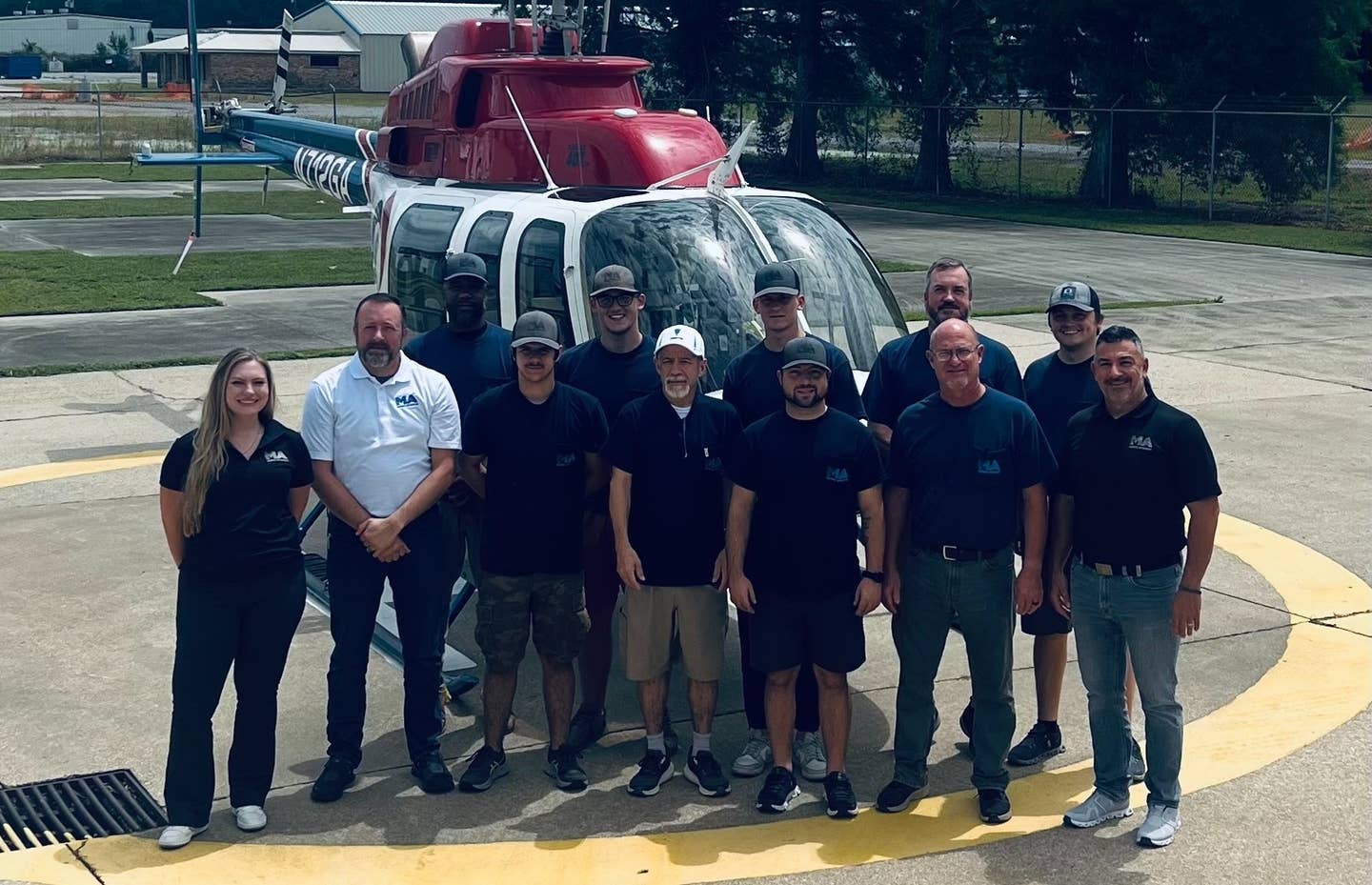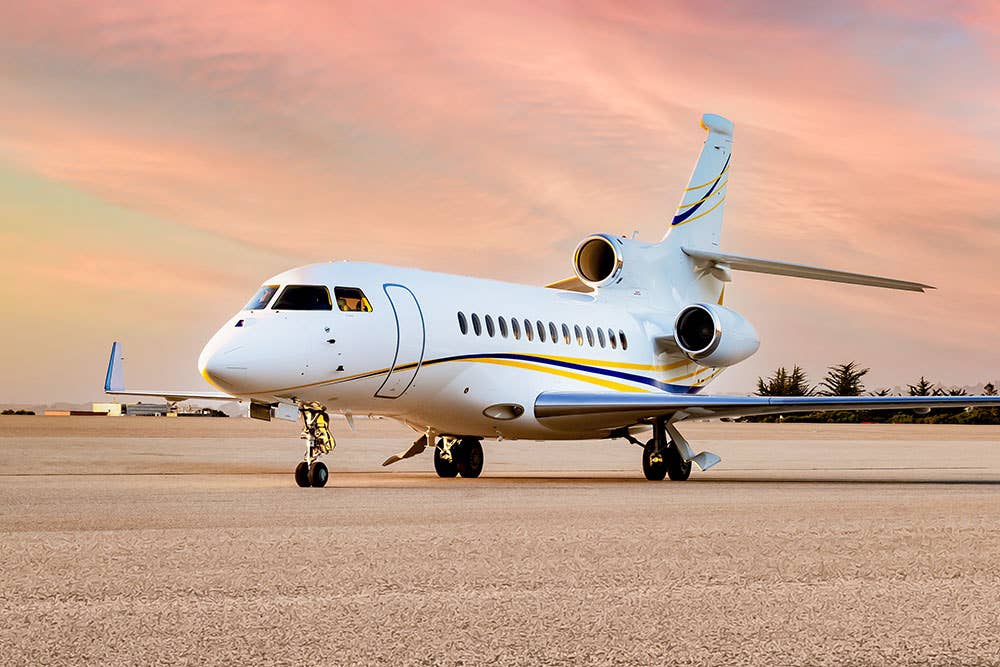
The lobby of the Hilton Hotel across from the John Wayne Airport in Orange County, California, is packed with conventioneers. They are making a joyous noise. I am looking for Phil Smith among the throng; we will be joined at the hip for the better part of a month as we progress through "Indoc" at JetSuite headquarters here and Cessna CJ3 training at CAE in Whippany, New Jersey.
At 8 a.m. on a Sunday morning, we find ourselves in the mostly quiet office suite; only mission control, which manages all the airplanes, pilots and maintenance issues, and a few sales personnel are here. Director of Training Sam Stalvey welcomes the two of us — this will be a very personal Indoc. This also means I have nowhere to hide. Good thing Phil seems like a good guy.
Over the next three days, we learn about JetSuite standard operating procedures, Class II over water navigation, how mission control works and how to fill out an expense reimbursement request on Expensify. It is bewildering to me but not to Phil. Phil is half my age, a United States Air Force Academy graduate and just separated from the Air Force after 12 years. Oh, yes, I forgot: he’s an F-16 pilot, the Air Force’s F-15 demo pilot and an ardent general aviation guy with a Lancair parked at home in Tampa. We’ll see how I measure up against such formidable competition.
Not so well, at first, it turns out. At one point after a lengthy discussion of navigation requirements, Brian Coulter, the director of operations, surprises me with a simple question: “If you burn 600 pounds of fuel in 45 minutes, how much do you burn in two hours?” Stunned, I am suddenly completely bereft of any mathematical skill. I stammer an incorrect guess. With my trifocals, I look more like a book editor than a jet pilot. Bad start.
At night, Phil and I dine, drink a little and learn about each other. It is a unique human interaction to be thrown together day and night for several weeks, yet once we’re on the line, we will not fly together. We are the bottom two pilots on JetSuite’s seniority list, bound for separate captains and different trips. For now, though, we are a hardy band of two. I deputize Phil to handle all mathematics from here on in.
The JetSuite culture is welcoming, and it is clear that certain basic principles are to be lived not just espoused. The sticker on the back of my new company-provided iPad says, “Serve from the heart. Love what you do. Improve something today. Deliver on commitments. Have fun. Ask for help. Make mistakes valuable,” among other uplifting phrases. The tenor seems good.
On day four, we drive to the Van Nuys neighborhood in Los Angeles, where we undergo emergency training. We crawl out of a Gulfstream escape hatch in pitch-black smoke; it is so dark that you have to touch the person in front of you and feel for reference landmarks in order to find the hatch. After lunch and more academics about ditching, we adjourn to a nearby motel swimming pool to practice entering a raft. There are about 30 of us in the class, and many are here for recurrent training. They fly all sorts of airplanes; some are on Gulfstreams and some are flight attendants on big iron. The latter add to the festive nature of the water training by virtue of their California-appropriate swimwear. After a final dinner, Phil and I part for a few days of “leave” before reassembling in Parsippany, New Jersey, for our Cessna CJ3 type rating training at CAE.
The Fairfield Inn in Parsippany looks like any other, I suppose, but I soon learn that it is staffed by some truly remarkable people. I have never stayed in any hotel for two entire weeks. Welcome to the real world of flying. I am about to learn the true difference between a hobbyist and a professional. Though I have been flying for 45 years, only a tiny bit has been professionally. Just 60 hours of my flight time are in jets or in a two-pilot cockpit. I am here to get a type rating and to take my place in the ranks of a people who fly for a living. It is a lifelong dream.
CAE is a welcoming, huge and professional place. School is similar to other type ratings I have done — great visuals, interactive screens and knowledgeable teachers. Class extends beyond 18:30, and I begin to confuse hydraulic pressure values with engine oil pressure numbers. Learning about this airplane is like watching evolution. I have gotten type ratings in the Cessna 500, Boeing 737-200 and the Lear 31, each designed after the other — you can just see how engineers went about solving problems.
Andy Lemons is a pilot with JetSuite. He got me the interview that led to this job, which led to this hotel and this training facility. He keeps a close eye on our progress. At one point, I send him a photo of class. The student in front of me is slumped over in a late afternoon stupor and a complicated schematic is projected on the screen. Andy sends me a photo taken from the cockpit of his JetSuite CJ3; it is a picture of Mexico taken from 45,000 feet. I vow to press on.
After a week, we get to the simulator. The airplane is simpler than the Lear 31A that I have been flying a little. It has the Rockwell Collins Pro Line 21 flight management system, which, though intimidating, proves to be a remarkable piece of electronics. Phil makes me go first, so he can see how I screw up. There is a lot for him to admire. My steep turns are sloppy. My situational awareness is poor. And this is just the first session, composed only of routine maneuvers. No emergencies yet.
Phil takes over. He nails everything. He doesn’t gain or lose a knot of speed or a foot of altitude in steep turns. I wonder if the sim is actually on. Two hours later, I retreat to the Fairfield Inn a beaten man. I call my wife, Cathy, who patiently points out that Phil is younger than my youngest child, has been a professional fighter pilot and has done nothing else but aviation since he headed to the Air Force Academy out of high school. Still.
I resolve to pick up my game and try harder. Phil is encouraging. We get dinner together every night. Phil is becoming a good friend. His fighter-pilot chops are held in high regard at CAE, and I hope to hide in his shadow. He charms everybody. I try to lie low, still feeling more like a former surgeon than a jet pilot.
We’re in the thick of it now: fires, emergency descents, engine shutdowns and restarts, and the dreaded V1 cut, where an engine fails after the commit-to-fly speed but you are still on the runway. The airplane is easier to steer than the Lear 31A, and the V1 cuts are more benign. We run into several great instructors, but Tony Carmagnola stands out. He laughs when Phil and I kid each other. The instructors seem to feed off the rapport that Phil and I have developed. Things are getting better rapidly. Good thing, as the check ride is fast upon us.
I turn 68 years old in the Fairfield Inn. Phil sneaks out to get a cake and with the help of David, the night manager, they surprise me. We sit in the lobby, offering birthday cake to guests as they check in. The next night, Cathy arrives, surprising me by driving for six hours, so she could bring our dog, Corbett. She takes me to a fancy restaurant in New York City. In many ways this is the best birthday of my life.
We start the check ride in a briefing room. John Gregor is our designated examiner. He alternates between Phil and me with questions. Max takeoff weight, max landing weight. Max generator output on the ground (less cooling). Limitations on gear and flaps. What is on the squat switch? (About 20 items, if you want to know.)
Apparently, we do well enough. Off to the sim. I still go first. The check ride is straightforward, but I have a lot riding on it this time. My employment with JetSuite — and a lifelong dream to fly jets — is predicated on passing. My previous type ratings have been more of a lark than of a profession. I am nervous. Two hours later, I am exhausted. The ride is fair, and I think I did OK. Steep turns, stalls, engine restart, single engine ILS, a circle to land at Kennedy (don’t turn too soon — you are a category C airplane) all seems OK, though my performance is definitely degraded by anxiety. Now, it is Phil’s turn.
My pride precludes an in-depth assay of his performance, but it is so satisfactory that after the conclusion of the check ride we are rewarded with a sim ride down the Hudson River, with CAE’s incredible graphics (including the new Freedom Tower) ushering us along until Phil flies under the George Washington Bridge and brings the nose up 90 degrees.
In the debriefing room, John is complimentary to us — both of us, I am careful to note. We are awarded new type ratings, but we aren’t done yet. We have to stay another day in order to do our single-pilot check ride. Fortunately, we know just where to celebrate the check ride: Anthony’s Pizzeria and Restaurant in Rockaway, New Jersey. This family restaurant is owned by Tony C’s dad and uncle, and we’ve eaten there once before. Tonight, we celebrate with two JetSuite captains who have just arrived for recurrent training. Once again, the food is extraordinary, and it will just not stop coming. Dish after dish arrives with precision and a smile. Good thing the sim has no takeoff weight limits.
The next morning, we hurry back into test-taking mode, but it is clear that John has already figured us out. The single-pilot check ride is straightforward. Again, two new type ratings are awarded, this time with the single-pilot endorsement. Though I have dearly missed my wife and family, I am sorry to leave. This last month with Phil has been great. Next week we start IOE — initial operating experience. Our conversations will be by phone and text. We are off to fly.
In this column, Dick Karl discussed a checkride he took at the CAE Northeast Training Center facility in the CJ3 Level D flight simulator. In his discussion of the experience, he mentioned his friend taking a "flight" in the simulator down New York City's Hudson Corridor with a low pass under the George Washington Bridge. It might not have been clear to some readers that the Hudson Corridor excursion was conducted after the checkride had been completed and in no way was a part of the examination.
We welcome your comments on flyingmag.com. In order to maintain a respectful environment, we ask that all comments be on-topic, respectful and spam-free. All comments made here are public and may be republished by Flying.

Subscribe to Our Newsletter
Get the latest FLYING stories delivered directly to your inbox






